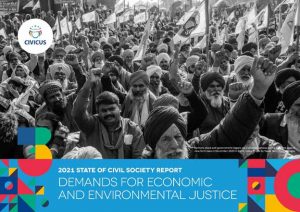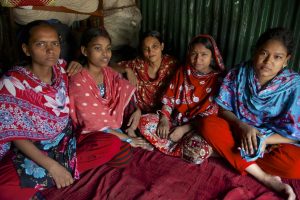Caroline Kennedy was just 20 years old when she accompanied her uncle, the late Senator Edward Kennedy, to Hiroshima, site of the first U.S. bomb attack that killed 140,000 people on August 6, 1945. In a Senate hearing in September, confirming her appointment as U.S. Ambassador to Japan, she said she was deeply moved by her visit in 1978 that
included a tour of the Hiroshima Peace Memorial Museum. In her video message to the people of Japan posted before assuming office on November 12, 2013, she remarked that her trip to Hiroshima had left her “with a profound desire to work for a better, more peaceful world”. Less than one month after her arrival in Tokyo as U.S. Ambassador to Japan, Caroline Kennedy – the only living daughter of President John F. Kennedy who was assassinated in Dallas some 50 years ago in November – visited Nagasaki in western Japan, which also suffered American atomic bombing on August 9, 1945. Ambassador Kennedy was invited by the Nagasaki Prefectural (Municipal) Government on the occasion of a ceremony for planting a dogwood tree, one of thousands the United States offered to Japan as a symbol of friendship, at the city’s Peace Park, which commemorates the 73,000 people – more than a quarter of the city’s 263,000 inhabitants at the time – who died in the U.S. atomic bomb attack on the city. Some 75,000 people were injured and hundreds of thousands were sickened by radiation, according to statistics at the Peace Park. During the tree planting ceremony, she said: “I am deeply moved by my visit here, and reminisced: “President Kennedy was very proud that he was able to start the process of nuclear disarmament and all of our
family shares that commitment.” She added: “President Obama also has been working very hard on this issue.” Earlier, on November 27, 2013, Ambassador Kennedy told a gathering of the American Chamber of Commerce in Japan (ACCJ) and the America-Japan Society in Tokyo that her father, President Kennedy, had “worked hard to strengthen the U.S.-Japan relationship at a difficult time, and my mother often spoke of his wish to be the first sitting President to visit Japan.” She added: “As a child, it made a deep impression on me that my father’s PT boat (torpedo-armed fast attack craft deployed by the U.S. during World War II) had been sunk by a Japanese destroyer, yet just 15 years later he was proud to invite the Japanese commander to his inauguration as President and excited about the possibility of uniting the crews of the two vessels on his future state visit. “That’s a great parable for our larger relationship and a reminder that when we focus on the things that unite us instead of those that divide us, when we look to the future instead of the past, we truly can create a better world.” Atomic bombing survivors (hibakusha) and peace activists have repeatedly pointed out that they would like a U.S. President to visit the two Japanese cities, which suffered atomic bombings. “We do hope that President Obama will respond to our call,” said a peace activist. Ambassador Kennedy toured the Nagasaki Atomic Bomb Museum, accompanied by Nagasaki Mayor Tomihisa Taue and other officials, and signed the visitor’s book. She also met hibakusha, including former Nagasaki University President Hideo Tsuchiyama and Japanese Red Cross Nagasaki Genbaku Hospital Director Masao Tomonaga. Reports quoted Ambassador Kennedy telling them that she felt the need to pursue efforts toward nuclear disarmament. Ambassador Kennedy’s programme also included a visit to the Urakami Cathedral, which was destroyed by the atomic bombing and was reconstructed after World War II. At Peace Park, she offered flowers in front of the Peace Statue, which is dedicated to the souls of A-bomb victims and symbolizes hope for eternal peace. According to the Nagasaki Prefectural Government, Caroline Kennedy is the fifth U.S. ambassador to visit the city of Nagasaki. Her predecessor John Roos attended peace ceremonies on the anniversaries of the bombings in both Hiroshima and Nagasaki, the first U.S. ambassador to do so. Nagasaki appeal Commemorating the atomic bombing of Nagasaki Mayor Tomihisa Taue, who guided her during the visit, issued a ‘Peace Appeal’ on August 9, 2013, which stated: Under the current NPT (Nuclear Non-Proliferation Treaty), nuclear-weapon states have a duty to make earnest efforts towards nuclear disarmament. This is a promise they’ve made to the rest of the world. In April of 2009, United States President Barack Obama expressed his desire to seek a nuclear-free world during a speech in Prague. In June this year, President Obama stated in Berlin that he would work towards further reduction of nuclear arsenals, saying, ‘So long as nuclear weapons exist, we are not truly safe.’ Nagasaki supports President Obama’s approach.” Taue regretted that “there are over 17,000 nuclear warheads still in existence of which at least 90% belong to either the United States or Russia,” adding: “President Obama, President Putin, please commit your countries to a speedy, drastic reduction of your nuclear arsenal. Rather than envisioning a nuclear-free world as a faraway dream, we must quickly decide to solve this issue by working towards the abolition of these weapons, fulfilling the promise made to global society.” Nearly one week ahead of Caroline Kennedy assuming the office of U.S. Ambassador to Japan, the city of Nagasaki hosted the 5th Nagasaki Global Citizens’ Assembly for the Elimination of Nuclear Weapons from November 2 to 4, 2013. Citizens of Nagasaki have continued their tradition of convening such Global Citizens’ Assemblies, which they have held every few years since the year 2000. Participants in the Assembly included representatives from nongovernmental organizations (NGOs) and scientists from Japan and abroad. They heard again the voices of hibakusha, and their urgent appeal that the elimination of nuclear weapons becomes a reality while they are still alive. They also listened to hopeful voices of young people accepting responsibility for achieving and maintaining a world without nuclear weapons.
An eminent participant and speaker – as in previous four meetings as an invited guest of the city of Nagasaki – was David Krieger, President of the Nuclear Age Peace Foundation, who has participated in the drafting of all the Nagasaki Appeals. One highlight of the Appeal, Krieger told IDN, is that it calls for “a series of concrete actions, including commencing negotiations on the prohibition and elimination of nuclear weapons; the U.S. and Russia taking unilateral and bilateral nuclear disarmament measures; phasing out of reliance on nuclear weapons in the security policies of all countries; having greater citizen participation in nuclear abolition campaigns; establishing new nuclear weapon-free zones; aiding the victims of Fukushima (nuclear power plant accident); and learning the lesson that humanity cannot continue to rely upon nuclear energy any more than it can rely upon nuclear weapons.”
Nuke Free Zone in Northeast Asia The Appeal also offers some specific advice to the Japanese government based upon its special responsibilities as the world’s only country to have been attacked with nuclear weapons, said Krieger. “These responsibilities include: coming out from under the U.S. nuclear
umbrella; providing leadership to achieve a nuclear weapon-free zone in Northeast Asia; demonstrating leadership for nuclear weapons abolition; and seeking and welcoming international assistance in controlling the radiological crisis at Fukushima.” The Appeal points out that leaders of 532 local authorities in Japan have expressed support for a nuclear weapon-free zone in Northeast Asia, as did 83 Japanese and South Korean parliamentarians from across the political spectrum in a joint statement on July 22, 2010. In September 2013, the President of Mongolia indicated his country’s interest in exploring the establishment of a nuclear weapon-free zone in Northeast Asia at the United Nations General Assembly. To demonstrate leadership, says the Appeal, Japan should take advantage of the opportunity presented by the Non-Proliferation and Disarmament Initiative (NPDI) Foreign Ministers’ Meeting to be held in Hiroshima in April 2014. Japan, it says, should also urge political leaders and government officials who will participate in the G20
Summit that will be held in Japan in 2016 to visit Hiroshima and Nagasaki. Further: The participants in the Nagasaki Global Citizens’ Assembly pledge to continue “utmost efforts to achieve a world without nuclear weapons”, and aver: “Nagasaki must be the last A-bombed city.” This, notes Krieger, is a necessary goal for humanity and for the future. “It is the great challenge that confronts all of us living on the planet in the Nuclear Age. Nagasaki is doing its part to lead the way. They need our voices and our commitment to succeed.” Since “change takes work,” as Ambassador Kennedy said, “and it takes
perseverance,” a huge lot needs be done to turn Kennedys’ commitment to peace and disarmament, particularly as 17,300 nukes remain, threatening many times over the very survival of human civilization and most life on earth, as the November 2013 Nagasaki Appeal points out.By Taro Ichikawa – Eurasia Review




